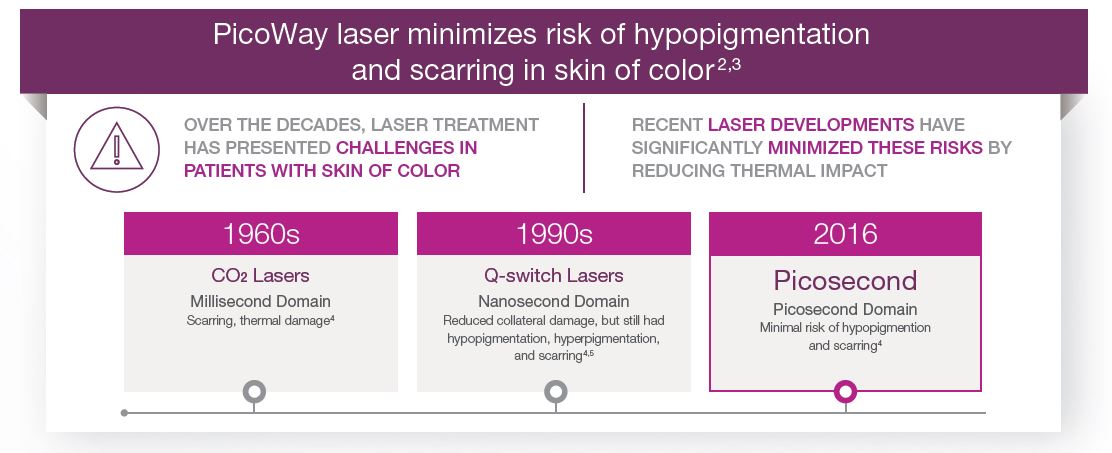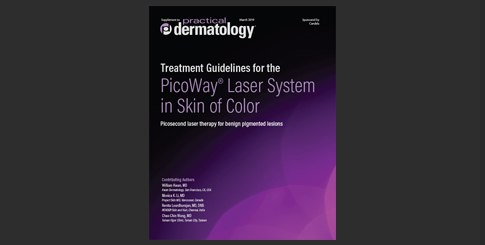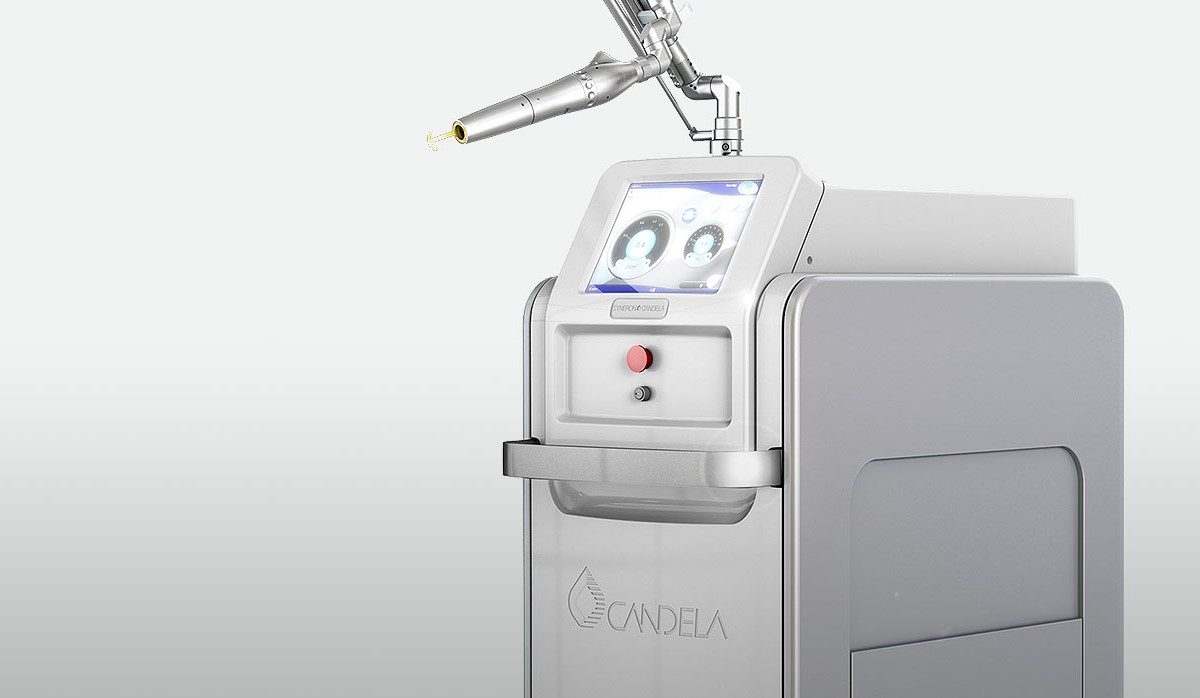In Europe, the demand for ‘all colors of skin’ laser treatments is on the rise.
In Southern Europe, there have always been many people with Fitzpatrick skin types IV – VI. In Northern Europe, this percentage ranges from nearly 30% in Belgium to around 20% in Switzerland and the Netherlands (Bataille et al, 2005). Combine this with increased average income and immigration and you’ll get our point. The demand for ‘all colors of skin’ laser treatments is on the rise.
Treating ‘all colors of skin’ with lasers asks for special considerations.
It's well known that cosmetic treatments differ for patients with ‘‘all colors of skin’ ’. And, treating darker skin types with lasers has especially been a challenge. Some laser treatment considerations include:7,8
- A wavelength that is specific to and well absorbed by the chromosphere being treated, good skin penetration, and preferential absorption of melanin.
- A laser that doesn't overheat surrounding tissues.
- A laser that offers highly customisable treatment parameters (adjustable power, spot size and fluence, no compromise of spot size for fluence).
- A laser treatment that requires a small or reduced number of treatment sessions, relative to other laser treatment options, with minimal treatment time and low fluence.

The latest lasers, such as the PicoWay® system, open new doors.
Nanosecond lasers have restrictive use in ‘all colors of skin’ due to the significant risk of PIH. With QS lasers, 'all colors of skin' has a 25% risk of developing PIH.5 Risk is reported to increase to 47% when the treatment is specific for lentigines, possibly due to the melanocytic hyperplasia noted histologically in a lentigo.5 Picosecond lasers however can be used in a broader range of skin types than nanosecond lasers due to reduced risk of hyper- or hypopigmentation and scarring with picosecond photoacoustic versus photothermal effect. Shorter pulses and enhanced photoacoustic effect avoids overheating of skin and decreases risk of PIH. In skin of colour, a clinical study with the picosecond laser demonstrated a low rate of PIH, at only 4.65% of the lesions.6
Resources for treating 'all colors of skin'

Webinar
Douglas Wu, MD, PhD, shares his insights and experience treating 'all colors of skin' patients.

Treatment Guidelines
Learn more about treatment guidelines for the PicoWay system ‘all colors of skin’ .

Before & After Book
Remove Boldy. Treat Lightly.
See for yourself in the PicoWay B&A flipbook.
About the Picoway® system
Meet the picosecond laser intentionally designed to work from the inside out.2,3,9-11 The PicoWay® system delivers high peak power and the shortest pulse durations for a non-thermal, photoacoustic effect that transforms skin from the inside out. With this remarkably innovative picosecond laser, you can:
- Significantly improve acne scars and wrinkles with a series of quick, 15- to 20- minute treatments, with low to no downtime.
- Address a range of benign pigmented lesions with flexibility in depth and spot size.
- Treat a wide range of tattoos. Even difficult-to-treat blue and green tattoos.
Want to learn more? Let a Candela product expert show you how the PicoWay system can help transform your your practice or sign up for our Picoway Update Program to receive regular updates about scientific developments, as well as invitations for related webinars.
References:
1. Colby SL, Ortman JM. Projections of the Size and Composition of the U.S. Population: 2014 to 2060. US Census Bureau. March 2015.
2. PicoWay, CE Mark.
3. PicoWay, CE Mark.
4. Adatto MA, Amir R, Bhawalkar J, et al. New and advanced picosecond lasers for tattoo removal. Curr Probl Dermatol. 2017;52:113-123.
5. Wang CC, Sue YM, Yang CH, Chen CK. A comparison of Q-switched alexandrite laser and intense pulsed light for the treatment of freckles and lentigines in Asian persons: a randomized, physician-blinded, split-face comparative trial. J Am Acad Dermatol. 2006;54(5):804-810.
6. Negishi K, Akita H, Matsunaga Y. Prospective study of removing solar lentigines in Asians using a novel dual-wavelength and dual-pulse width picosecond laser. Lasers Surg Med. 2018;50(8):851-858.
7. Torjesen I. Cosmetic needs differ for skin of color patients. Dermatol Times. 2018;(39)6:1-2.
8. Alexis AF. Lasers and light-based therapies in ethnic skin: treatment options and recommendations for Fitzpatrick skin types V and VI. Br J Dermatol. 2013;169(suppl 3):91-97.
9. PicoWay, CE Mark.
10. PicoWay, CE Mark.
11. PicoWay, CE Mark.

